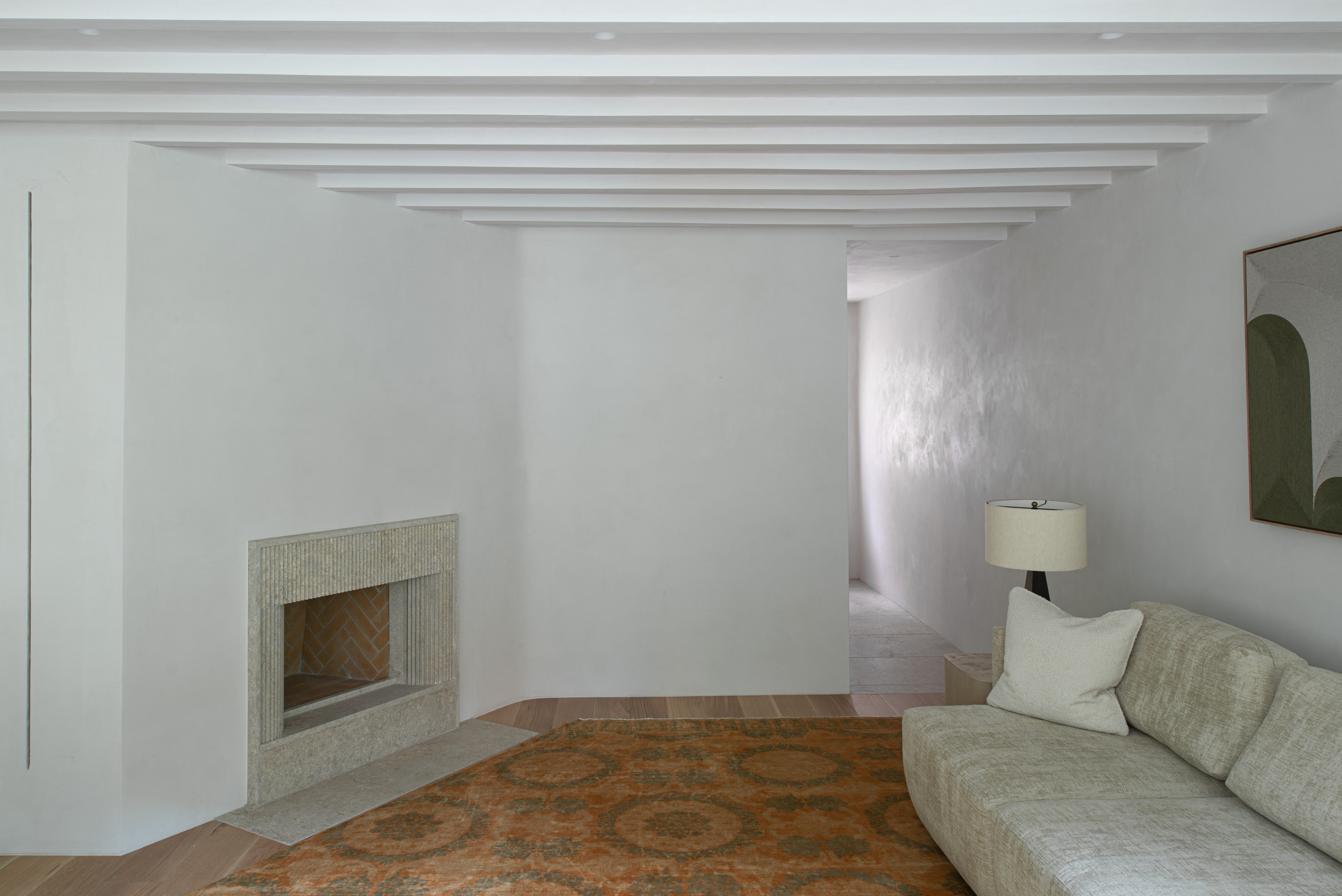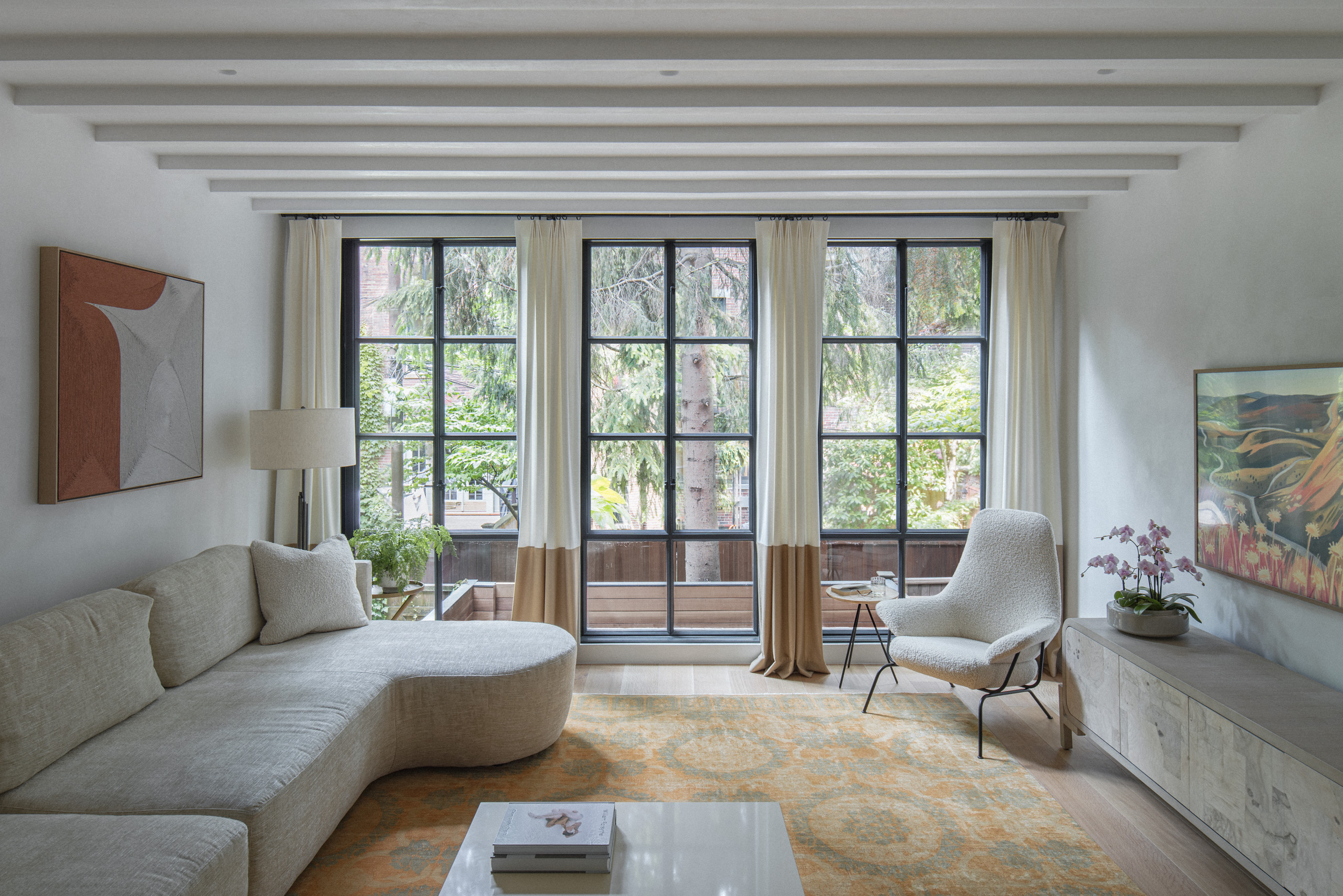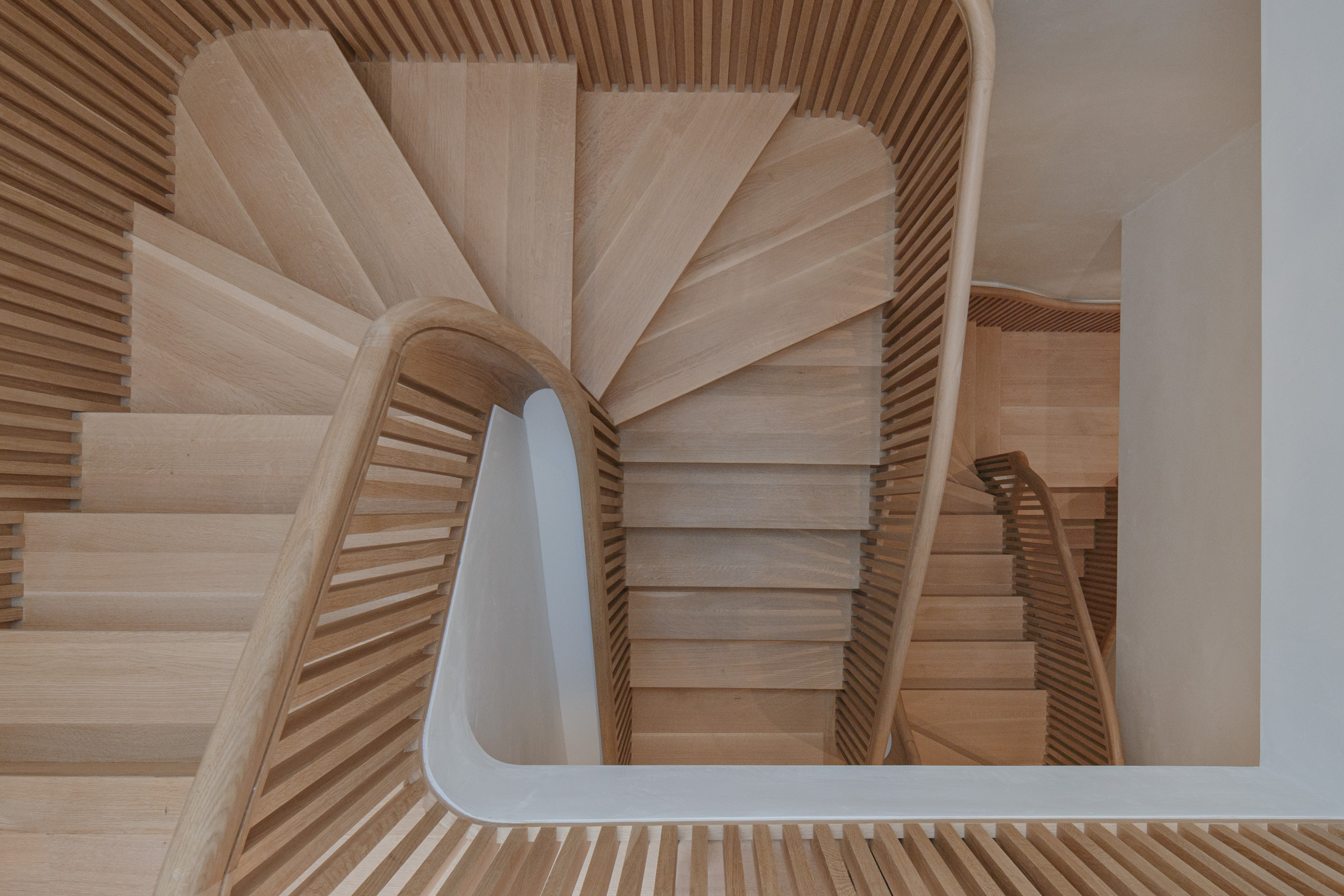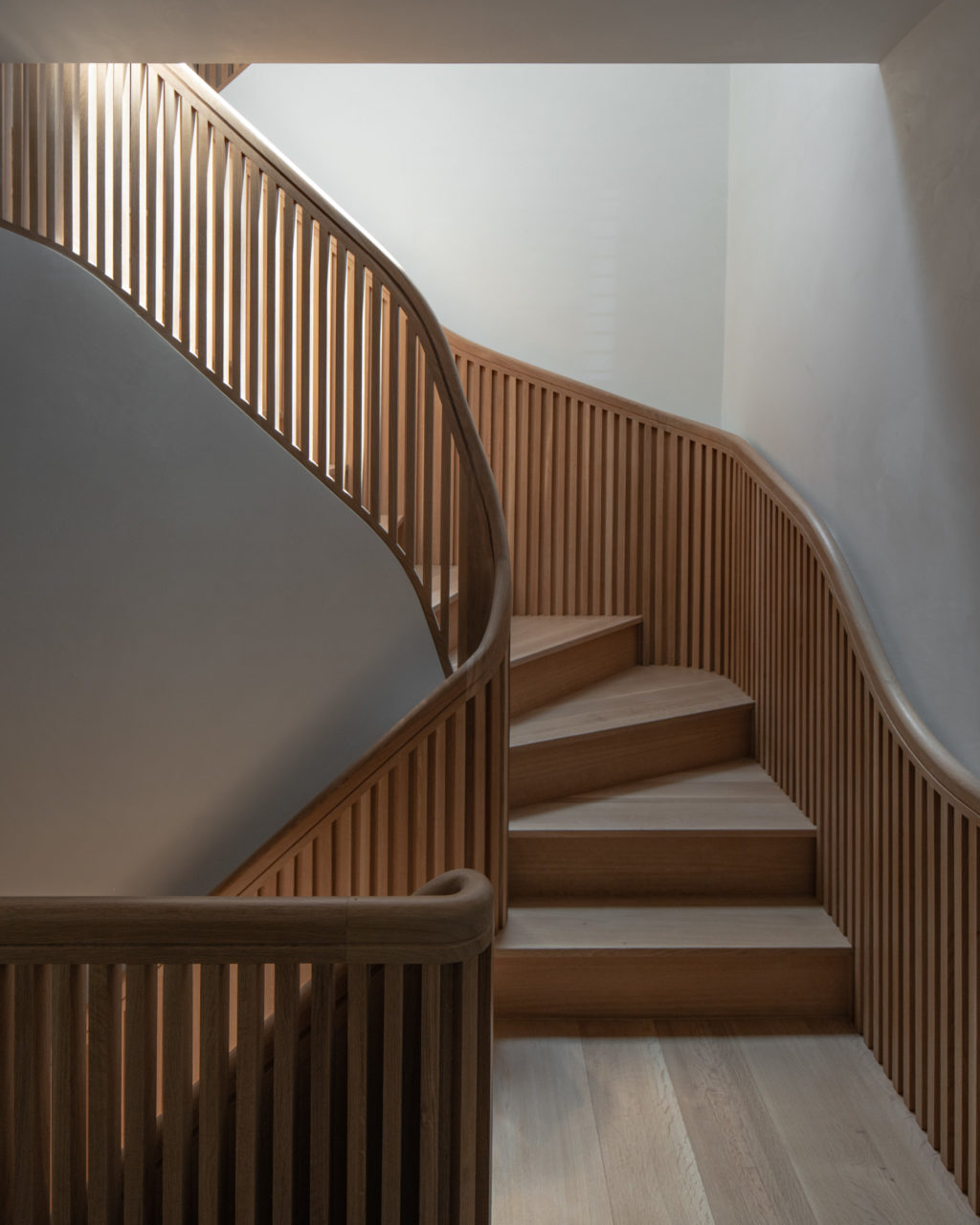From the street, a row house built in 1892 in Boston’s South End passes as stately but unassuming. But inside the 15-foot-wide, 4-story volume, another world emerges: The narrow home has been fully reconceived, reconstructed, and resurfaced from the bricks in. While the space is finished in rich materials and details—lime plaster walls, a travertine island, and a winding white oak staircase—its realization also offers important notes about coauthorship and creativity.
The project’s client approached J. Jih, who leads the Boston-based Studio J. Jih, after seeing a sculpted roof deck they completed using Japanese joinery and no screws. The design “revealed a level of detail and consideration of the comforts and requirements of the body that appealed to him,” Jih told AN Interior. They invited Figure, a San Francisco–based office led by James Leng and Jennifer Ly, to join as collaborators. The trio met in school, at the Harvard GSD, and had been looking for a chance to work together professionally.

To start, the most urgent issue was the staircase, which consumed the interior third of each floor. The team tested new configurations in which desirable rooms grew and secondary spaces shrunk; these larger rooms—the kitchen, living room, and bedroom—were then shifted to the rear of the plan. Here, the architects added new openings to this south-facing facade, resulting in a grid of tall, divided windows that brighten the interior.

The scheme left “the logic of the stair as this puzzle piece we were trying to determine,” Ly said. In response, the stair was “allowed to misbehave,” in Leng’s phrasing. (This deviance was useful, as it increased the residence’s usable area by 20 percent.) It now swoops and switchbacks, contoured by the space available plus the building code. These gymnastics supply its Shaker-like figure as it hairpins upward, a sensibility that’s heightened by the ribbed balustrade, which is left open or solid as needed. The chunk of circulation, which also conceals the angled flue of a ground-floor fireplace, lodges within a quadruple-height void, illuminated by a skylight.
While the architects resolved shared Rhino models to slivers of an inch, constructing the stair in real life was another story. Jih said the team generated an “exceptional level” of shop drawings to demonstrate that the sinuous piece was, in fact, buildable. But the fabricator—Jonathan Michael, from Stairworks of Boston—only worked from hand drawings. Still, he was “incredible.” Michael produced 1:1 hand-drawn details of everything and then made mock-ups using cardboard tubes onto which he’d “draw the entire stair as it rolled around,” Jih recounted. From that template, one-story runs were shop-fabricated and installed on-site. When the design was converted between drawing mediums, the stair geometry changed due to the differences in tolerances. Jih said there was a “fascinating process of translation and a recalibration of [the team’s] understanding how to exert and cede control.” Rather than architectural drawings being treated as exacting instructions or, alternately, esoteric abstractions, lately they have become a site of dialogue or a surface of collaboration.


The stone island in the garden-level kitchen was another point of cocreation. Jih worked with masons in China—mostly through WeChat video calls—to shape a monolithic-seeming travertine object assembled from blocks. (It flares outward at its top to save space at its bottom and integrates a sink, oven, and dishwasher.) The pieces were craned into the backyard and rolled into place using logs. Additional moments of impressive stonework include the kitchen backsplash and surround, a freestanding powder bathroom sink, and the ribbed fireplace surround upstairs. Other refined touches include solid-edge millwork, pulls, and slightly expressed ceiling joists. The architects each formed attachments to particular details, Leng said, which allowed them to “lavish tender, loving care to individual aspects of the project.”
Studio J. Jih and Figure considered their working methods with thoughtful intentionality. Ly recalled that they “simulated a mini-studio project in how they assembled the brief,” which makes sense, as all three are also educators: Jih at MIT, Leng and Ly at the University of California, Berkeley. The chance to “benefit from each other’s expertise and ability as critics was particularly powerful,” Jih said. The interest continued after completion, with Leng taking photographs and the team generating postoccupancy documentation from 3D scans of the interior.


Throughout, the two practices were in ongoing conversation about how they “could leverage a sharing of resources,” Leng offered. “As a single firm starting out, it might be difficult to find projects and then to handle more than one project. … How can we share in ways that create a testing ground for a new paradigm of practice?” These offices join other voices asking the same question. Jih observed that the world now demands “forms of coauthorship that are inventive and challenge the paradigm of singular genius figures.”


